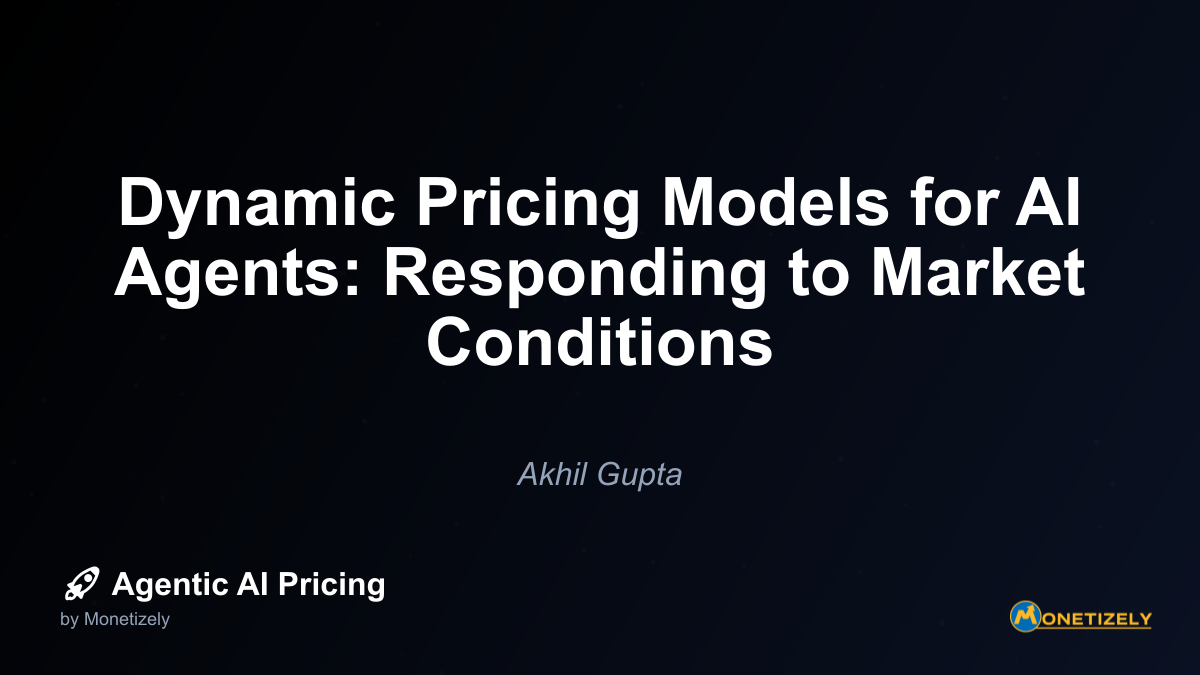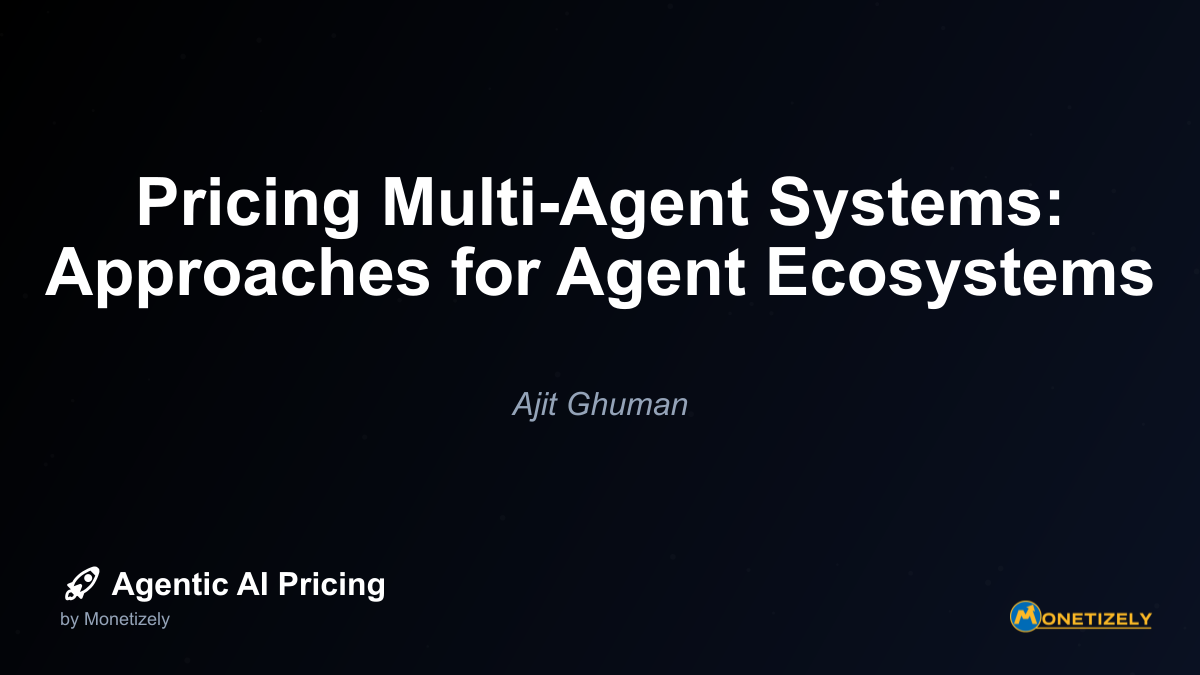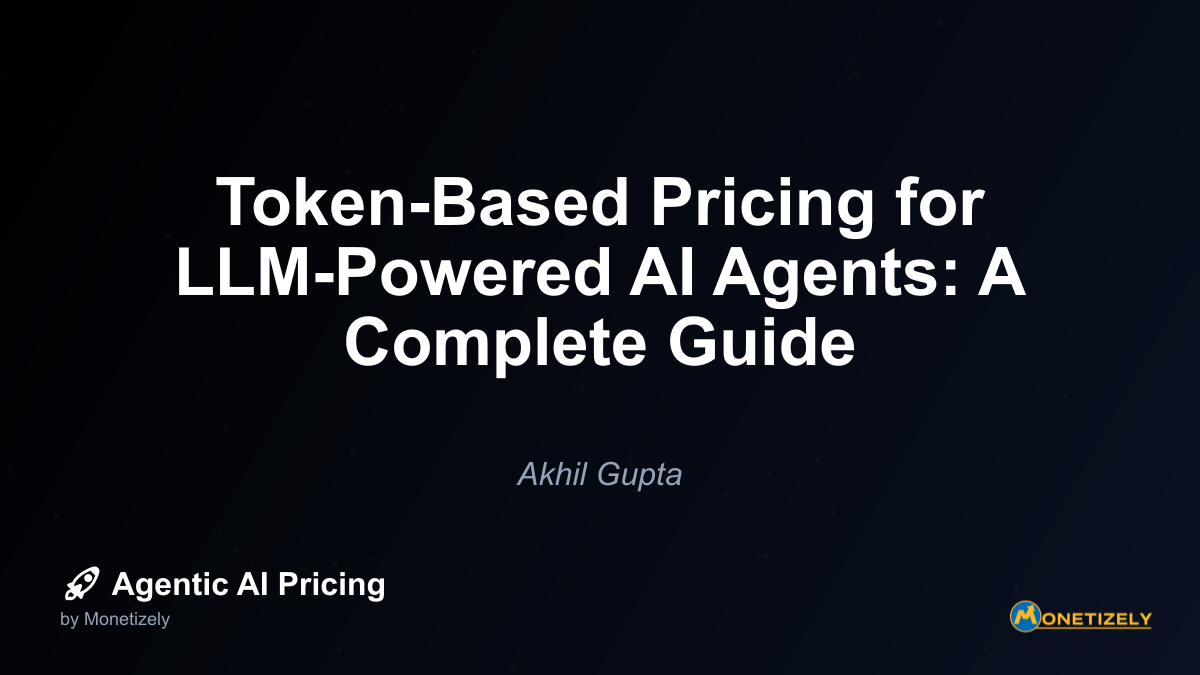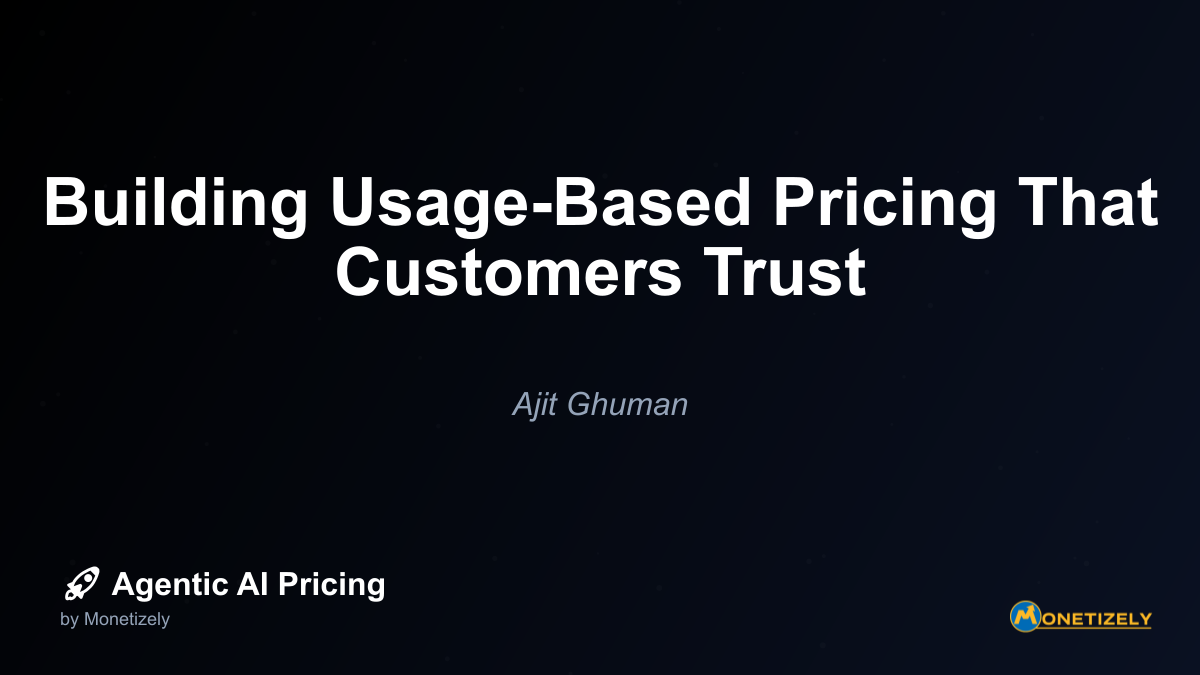· Akhil Gupta · AI Pricing Models · 6 min read
Subscription Fatigue and AI Pricing: Alternative Approaches
AI and SaaS Pricing Masterclass
Learn the art of strategic pricing directly from industry experts. Our comprehensive course provides frameworks and methodologies for optimizing your pricing strategy in the evolving AI landscape. Earn a professional certification that can be imported directly to your LinkedIn profile.
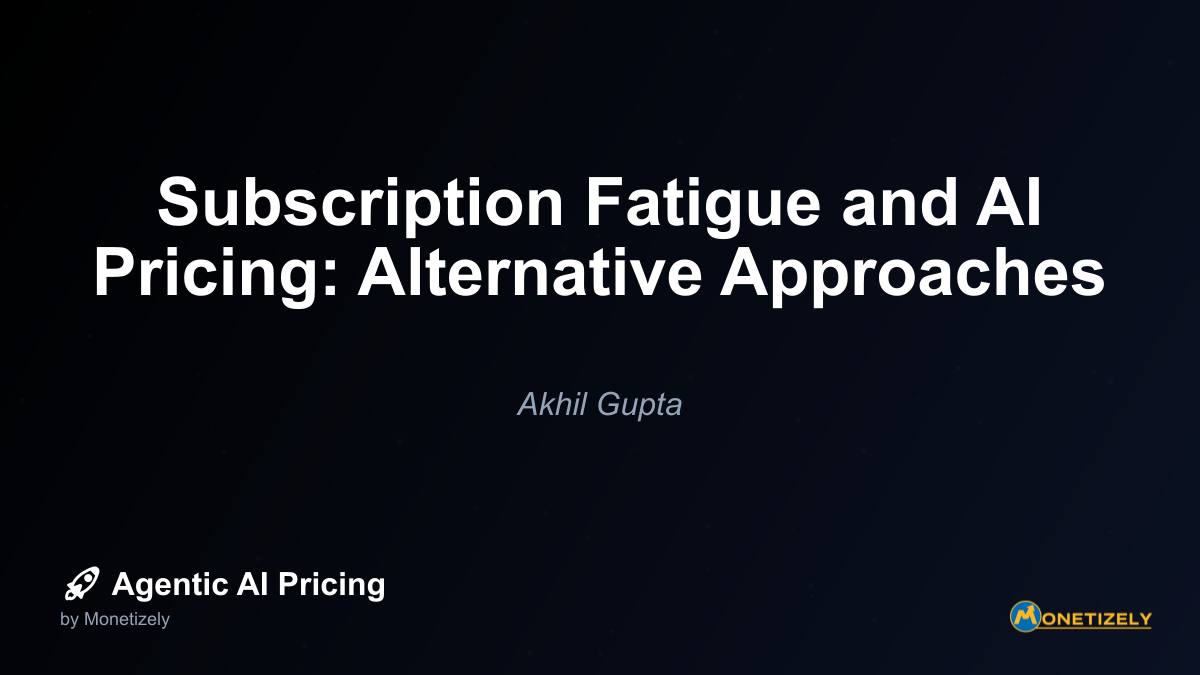
4. Perpetual Licensing with Maintenance Options
Reimagining the traditional perpetual license model for the AI era provides an effective alternative to subscriptions, particularly for enterprise customers.
Implementation approaches:
- Base model ownership: Selling perpetual access to trained models with optional updates
- Deployment licenses: Charging for implementation environments rather than ongoing usage
- Feature-based licensing: Selling permanent access to specific capabilities
Example in practice: An AI document processing solution might sell perpetual licenses to its core technology while offering optional maintenance contracts for model updates and improvements.
Psychological advantage: Perpetual licensing addresses the ownership bias by giving customers a sense of permanent value, reducing the “rental” feeling that contributes to subscription fatigue.
5. Freemium with Premium Features
Freemium models offer a particularly effective approach to combating subscription fatigue by removing initial adoption barriers.
Implementation approaches:
- Feature-limited free tier: Providing core functionality free with premium features behind paywalls
- Usage-capped freemium: Offering free access up to usage thresholds
- Time-limited trials: Providing full access for evaluation periods
Example in practice: Jasper AI offers a free tier with basic AI writing capabilities while reserving advanced features and higher usage limits for paid tiers. This reduces adoption friction while creating natural upsell paths.
Psychological advantage: Freemium models leverage the “foot-in-the-door” principle—once users incorporate a tool into their workflows, they’re more willing to pay for enhanced capabilities, even when initially resistant to subscriptions.
Hybrid Models: Combining Approaches to Combat Fatigue
The most effective strategies for addressing subscription fatigue often combine multiple pricing approaches into cohesive hybrid models:
Usage-Based Subscriptions
This hybrid approach maintains the predictability of subscriptions while addressing usage concerns by incorporating consumption elements:
- Base subscription + overage: Providing a base allocation with additional usage billed separately
- Tier-based usage bundles: Offering subscription tiers based on expected usage levels
- Minimum commitment + variable: Requiring minimum spending with variable consumption above thresholds
Example in practice: Claude AI’s enterprise offering combines a base subscription that ensures access with usage-based billing that scales with actual consumption—providing predictability while aligning costs with value.
Value-Based Subscriptions
This approach transforms traditional subscriptions by incorporating outcome-based elements:
- Performance-adjusted pricing: Adjusting subscription costs based on achieved results
- Success-based tiers: Moving customers between pricing tiers based on documented outcomes
- ROI guarantees: Offering subscription refunds if value metrics aren’t achieved
Example in practice: AI-powered sales platforms often combine base subscriptions with performance bonuses tied to revenue increases, creating a hybrid model that reduces subscription resistance by guaranteeing returns.
Implementation Strategies: Moving Beyond Subscriptions
Transitioning from subscription-only models to alternative pricing approaches requires careful planning and execution. The following implementation strategies can help organizations navigate this shift:
1. Conduct Preference Testing
Before overhauling pricing models, test customer preferences across different segments:
- Conjoint analysis: Measure how different pricing structures influence purchase decisions
- A/B testing: Test multiple pricing approaches with market segments
- Customer interviews: Gather qualitative feedback on pricing preferences and pain points
This research provides critical insights into which alternative models will most effectively address subscription fatigue in your specific market.
2. Develop Clear Value Metrics
Alternative pricing models require well-defined value metrics:
- Identify measurable outcomes: Determine which outcomes can be reliably measured
- Establish attribution methods: Create systems to attribute results to AI usage
- Set benchmark values: Establish baseline values for performance comparisons
These metrics form the foundation for value-based and outcome-oriented pricing alternatives.
3. Create Transparent Pricing Communication
Clear communication is essential when introducing alternative pricing models:
- Value calculators: Provide tools to estimate costs under new pricing structures
- Comparison guides: Offer side-by-side comparisons with subscription options
- Case studies: Showcase real examples of cost scenarios and outcomes
Transparency reduces the cognitive burden of evaluating new pricing approaches.
4. Implement Progressive Transitions
Rather than abrupt shifts, consider progressive transitions:
- Pilot programs: Test alternative models with select customer segments
- Optional models: Offer new pricing approaches alongside existing subscriptions
- Gradual implementation: Phase in new pricing elements over time
This approach allows for refinement while minimizing disruption.
Industry-Specific Considerations for Alternative AI Pricing
Different industries face unique subscription fatigue challenges and require tailored approaches:
Enterprise Software
Enterprise customers often manage hundreds of subscriptions, creating significant fatigue:
- Consolidated pricing: Bundle AI capabilities into existing enterprise agreements
- Department-based licensing: Align costs with specific business units rather than users
- Value-based enterprise agreements: Structure deals around business outcomes rather than access
These approaches reduce the proliferation of separate subscriptions while maintaining fair value exchange.
Consumer AI Products
Consumer markets show particularly high subscription resistance:
- Micro-transactions: Offer small, discrete purchases for specific AI tasks
- Lifetime access options: Provide one-time purchase options for core features
- Ad-supported tiers: Offer free access with advertising-based monetization
These consumer-friendly alternatives address the psychological barriers to subscription adoption.
B2B SaaS with AI Components
For B2B SaaS integrating AI capabilities:
- Feature-based pricing: Charge for specific AI capabilities rather than the entire platform
- Outcome guarantees: Tie AI pricing to specific business results
- Usage allowances: Include generous usage allocations that cover typical needs
These approaches prevent AI capabilities from becoming additional subscription burdens.
The Future of AI Pricing Beyond Subscriptions
As agentic AI continues evolving, pricing models will likely continue moving beyond traditional subscriptions toward more sophisticated approaches:
Dynamic Value-Based Models
Future pricing will likely incorporate real-time value assessment:
- Continuous value monitoring: Systems that track and price based on ongoing value delivery
- Predictive pricing algorithms: AI that anticipates value and adjusts pricing proactively
- Personalized pricing structures: Customized approaches based on individual usage patterns
These dynamic models will further reduce subscription fatigue by ensuring perfect alignment between costs and value.
Ecosystem Pricing
As AI ecosystems develop, new pricing approaches will emerge:
- Cross-product value sharing: Revenue distribution based on value contribution across AI systems
- Network-effect pricing: Models that adjust based on ecosystem participation
- Collaborative consumption: Shared access models across organizational boundaries
These ecosystem approaches will transform how AI value is captured and distributed.
Conclusion: Beyond Subscription Fatigue
Subscription fatigue represents both a challenge and opportunity for AI product developers. By moving beyond one-size-fits-all subscription models toward more nuanced pricing approaches, organizations can reduce adoption friction while capturing fair value for their innovations.
The most successful AI pricing strategies will be those that align with how value is actually created and experienced—whether through usage patterns, business outcomes, or access rights. By addressing the psychological barriers that drive subscription resistance, alternative pricing models can accelerate AI adoption while creating sustainable revenue models.
For organizations navigating this transition, the key is experimentation and adaptation. The ideal pricing approach will vary based on customer segments, product capabilities, and market dynamics. By developing a diverse pricing toolkit rather than relying exclusively on subscriptions, AI providers can overcome fatigue while establishing pricing as a strategic advantage in increasingly competitive markets.
As the AI landscape continues evolving, so too will pricing innovation—creating new opportunities to align business models with the unique value propositions of intelligent, agentic systems. The organizations that master this alignment will be those that thrive in the post-subscription era of AI monetization.
Co-Founder & COO
Akhil is an Engineering leader with over 16+ years of experience in building, managing and scaling web-scale, high throughput enterprise applications and teams. He has worked with and led technology teams at FabAlley, BuildSupply and Healthians. He is a graduate from Delhi College of Engineering and UC Berkeley certified CTO.
Pricing Strategy Audit
Let our experts analyze your current pricing strategy and identify opportunities for improvement. Our data-driven assessment will help you unlock untapped revenue potential and optimize your AI pricing approach.

